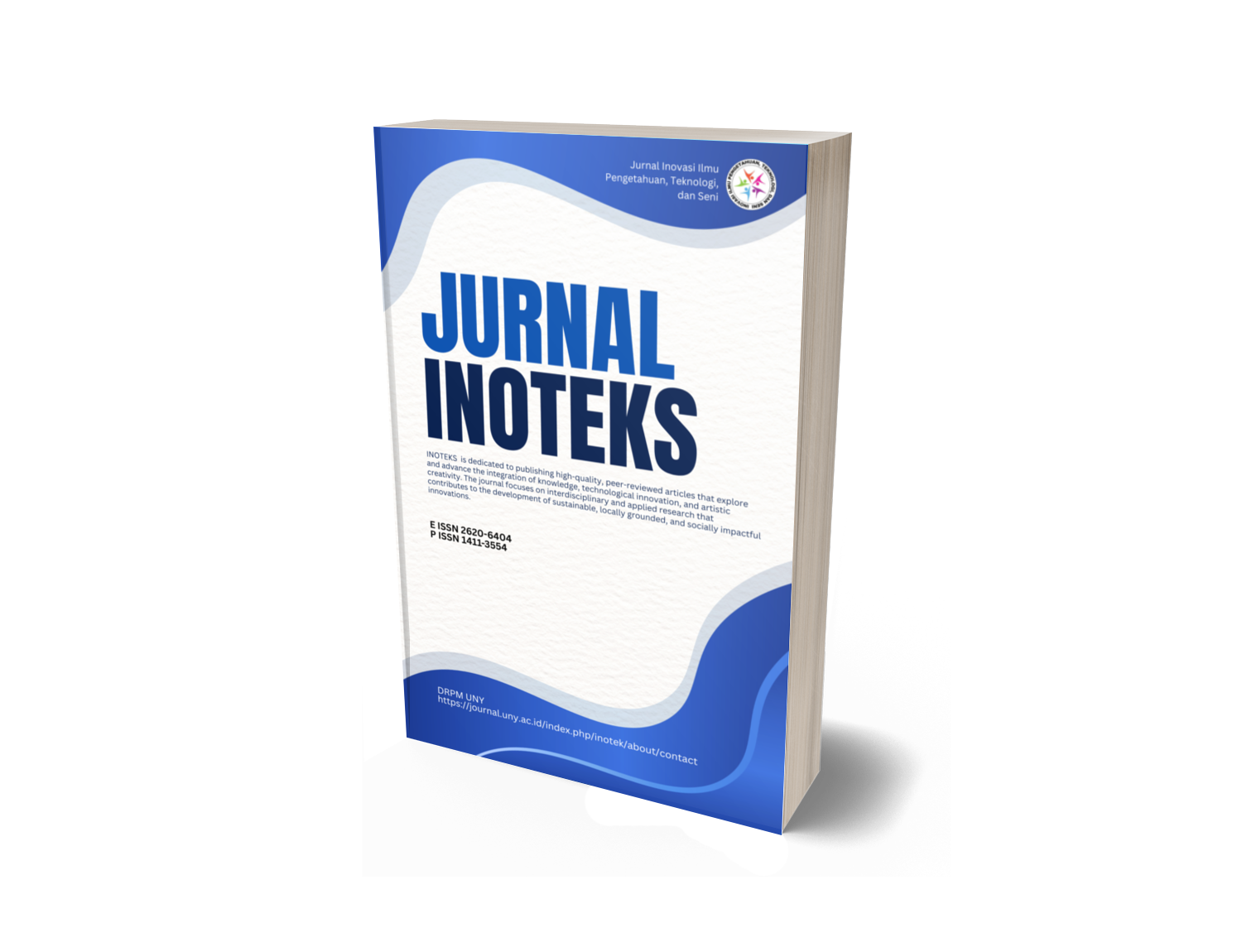PENGGUNAAN ALAT PERAGA MATERI RENTAN MATEMATIKA SEKOLAH DASAR
DOI:
https://doi.org/10.21831/ino.v8i2.5232Abstract
Both the abstract mathematical concept and who are in the stage of operasional concrete thinking need teaching media to bridge the gap. Teaching media is one of the alternatives used by teachers in elementary schools. The objective of this research is to improve the learning mathematics quality by means of appropriate media.This is action research consists of three cycles. The subject of the research is 19 first grade students of SD Negeri Palbapang J Bantul Yogyakarta.The result shows that (1) using the appropriatte teaching media canimprove the students' activity in learning mathematics. By using the teaching media, the teacher can be more creative in solving the students' learning problems. (2) The main handicap in using teaching media in the learning and teaching process is time constraint, lacking of media and teachers capability creating and developing media. (3) The students'difficulty in learning mathematics can be solved by teaching using media.
Key words: media, susceptible teaching material, mathematics
Key words: media, susceptible teaching material, mathematics
Downloads
How to Cite
Susanti, M., Sardjana, A., & Rosnawati, R. (2015). PENGGUNAAN ALAT PERAGA MATERI RENTAN MATEMATIKA SEKOLAH DASAR. INOTEKS: Jurnal Inovasi Ilmu Pengetahuan,Teknologi, Dan Seni, 8(2). https://doi.org/10.21831/ino.v8i2.5232
Issue
Section
Articles
Citation Check
License
- Authors certify that the work reported here has not been published before and contains no materials the publication of which would violate any copyright or other personal or proprietary right of any person or entity.
- Authors transfer or license the copyright of publishing to Jurnal Civics: Media Kajian Kewarganegaraan to publish the article in any media format, to share, to disseminate, to index, and to maximize the impact of the article in any databases.
- Authors hereby agree to transfer a copyright for publishing to Jurnal Civics: Media Kajian Kewarganegaraanas a Publisher of the manuscript.
- Authors reserve the following:
- all proprietary rights other than copyright such as patent rights;
- the right to use all or part of this article in future works of our own such as in books and lectures;
- use for presentation in a meeting or conference and distributing copies to attendees;
- use for internal training by author's company;
- distribution to colleagues for their research use;
- use in a subsequent compilation of the author's works;
- inclusion in a thesis or dissertation;
- reuse of portions or extracts from the article in other works (with full acknowledgement of final article);
- preparation of derivative works (other than commercial purposes) (with full acknowledgement of final article); and
- voluntary posting on open web sites operated by author or author's institution for scholarly purposes, but it should follow the open access license of Creative Common CC BY-NC-SA License.









